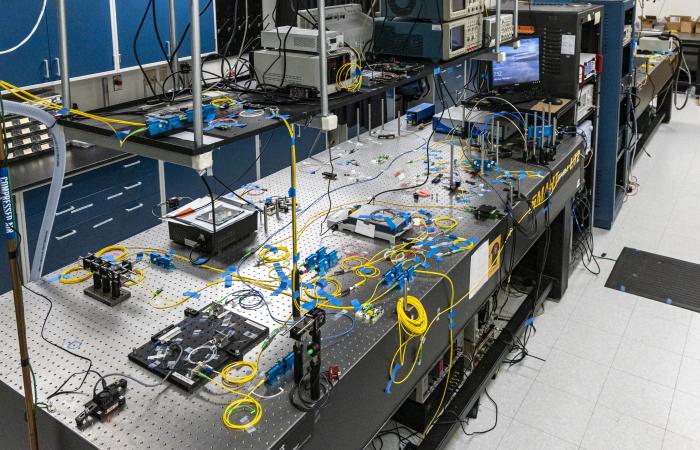ORNL’s QLAN brings us a step closer to Quantum Internet

The quantum future is coming at us faster than ever, as researchers continue to advance not just quantum computing, but also the notion of quantum networking and the vision for a full-scale Quantum Internet. While the latter won’t happen overnight, researchers from the U.S Dept. of Energy’s Oak Ridge National Laboratory, Stanford University and Purdue University recently took an important step in that direction with their demonstration of a fully functional quantum local area network.
That QLAN enabled “real-time adjustments to information shared with geographically isolated systems at ORNL [Oak Ridge National Laboratory] using entangled photons passing through optical fiber,” according to an ORNL news release.
A three-node “Alice, Bob and Charlie” network, in which the three nodes were deployed in three separate buildings on the ORNL, was used in this demonstration, which also leveraged the concept of remote state preparation and relied on flexible grid bandwidth provisioning and wavelength-selective switches to allocate and reallocate quantum resources to network users. For more technical information on the demo, see this news release.
Now that the ORNL research team has its QLAN, the next steps involve expanding the network and trying to connect it to other QLANs, which would be another key step forward toward the notion of a Quantum Internet. The big challenge with taking that step, however, is that while other researchers have created QLANs in smaller settings before, they aren’t any available on the scale of the one at ORNL that ORNL’s QLAN can connect to.
As the research team, led by Nicholas Peters, section head of ORNL’s Quantum Information Science Section, told IQT this week, “At the moment, there are none [no other QLANs] which are accessible, though we are in discussions and actively developing technology to connect via satellite or to neighboring cities, should they and [the opportunity to connect] to them become available.”
For now, the ORNL team is more focused on expanding and improving its own QLAN. “We are in process to make significant upgrades with the addition of an all-optical switch (which adds a fourth node), improved timing synchronization, adding an additional entangled source, as well as plans for adding quantum memories,” the team said. “The next phases will include expanding the entanglement bandwidth and expanding the diversity of quantum communications protocols that can be carried out on the network.”
The QLAN also will continue to be fiber-based, although entanglement is not a bandwidth-intensive application. Entanglement distribution via wireless 5G spectrum isn’t possible at this point, though the research team speculated that fiber could be used to distribute entanglement, while 5G could be used to carry the classical communications capabilities required to support quantum communications.
ORNL’s work to expand and refine its QLAN gradually will make it look a lot more like a quantum version of the Internet, but the research team said we’re still a long way from a Quantum Internet involving many users at a global–or even just continental–scale. Low-bandwidth connections via satellite between distant locations could be achievable in a few years, but likely won’t be viable at that stage for supporting cost-sensitive business applications.
If universities, labs and internet companies are eventually able to create larger interconnected quantum networks, even if they still require high levels of coordination between the enabling parties “that will be a fantastic achievement but not quite at a Quantum Internet stage,” the ORNL team said. “The technology will need to be matured to the point that companies can deploy and operate it without intervention from university and lab scientists and engineers.”



















